Drawing the Breath of Earth: A Conversation with Sujay Sanan
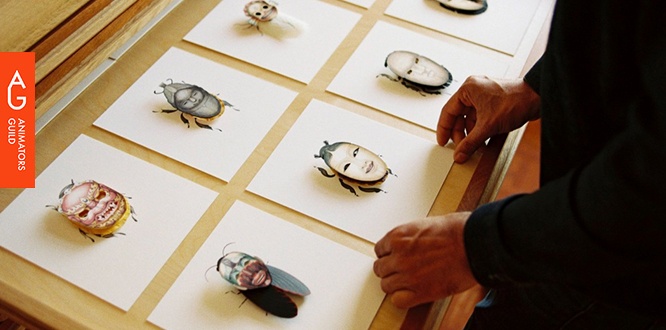
At first glance, Sujay Sanan’s work might strike you as a celebration of nature’s aesthetics—a graceful whale suspended in the metal of currency, an insect wearing the mask of a forgotten god. But look again, and you’ll find yourself pulled into a world where biology, myth, and identity are intricately woven into the contours of every line and shadow.

From Within and Without | Oil Pencils, Watercolour & Gold Gouache on Paper | A painting by Sujay Sanan | 2022

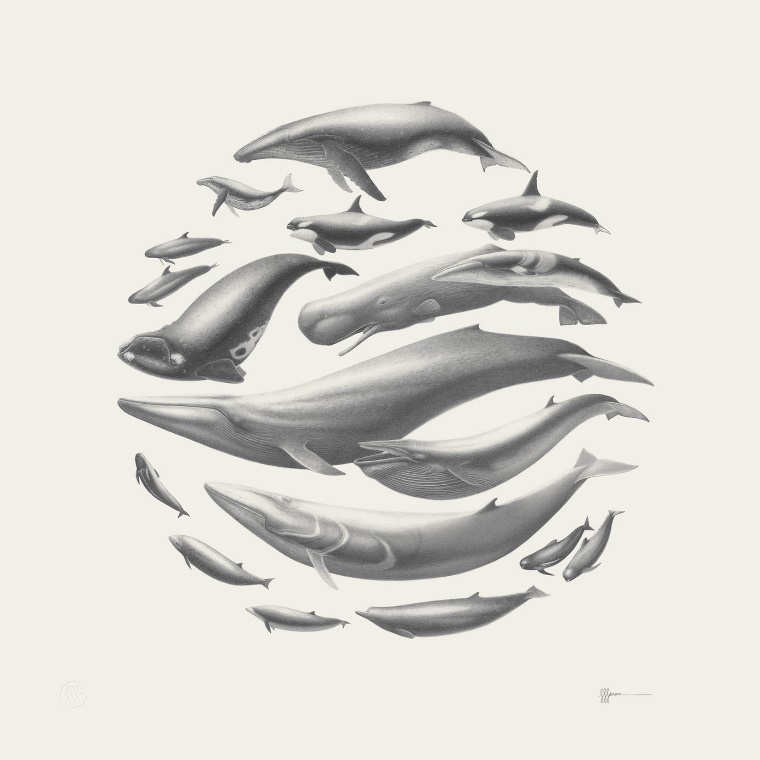
Art work by Sujay Sanan ( Cape Leopard 70 x 70 cm | 2016 & Whales Of The Cape 700 x 700 mm | 2020)
Born in India and now based in Cape Town, Sujay is not just an artist—he is a seeker. Through his intricate illustrations and imaginative landscapes, he draws from both science and story, ancient memory and ecological truth, building bridges between the human and natural worlds.

“My work is a response to a quest for self-definition. Structure allows me to set the context, while counterbalance brings in movement—and with movement, time. And time, to me, is essential for storytelling.”
Sujay’s artistic roots trace back to the mountains of Himachal Pradesh in India. Long before he found words, it was shapes and lines that helped him express and understand the world. His first canvases were the walls of his grandparents’ home, where monsters peeked from cupboard corners and green government-issued paper became windows into imagined realms.
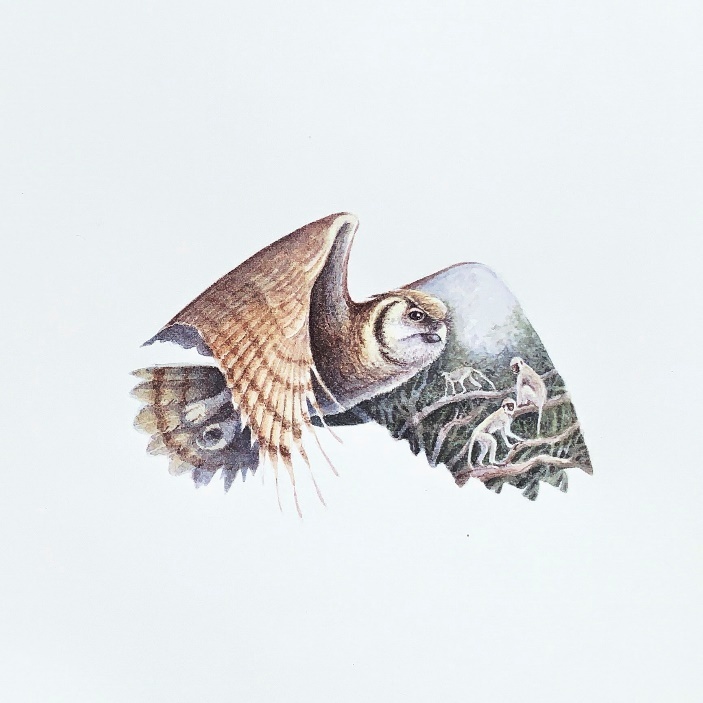
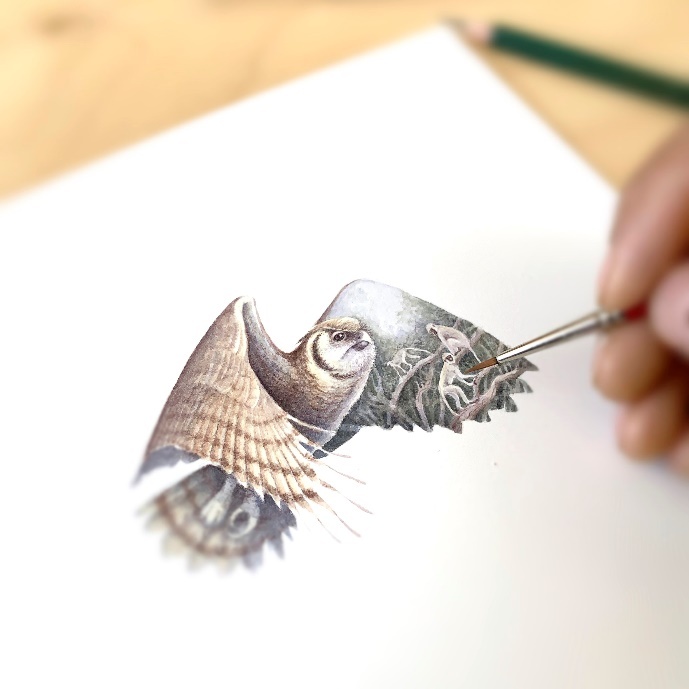
“Around the age of five, I had two strange epiphanies. First, that I had to consciously breathe—as if I'd been handed a chore just to exist. And second, that if I could imagine something, I could probably draw it.”
These early moments shaped him profoundly—both as a child prone to respiratory issues and as a relentless creator compelled to trace the edges of his imagination into form.
Sujay’s formal education at the National Institute of Design (NID) laid the foundation for his critical thinking and creative execution. Initially fascinated by signage and wayfinding systems—dreaming of projects like Lance Wyman’s designs for the 1968 Mexico Olympics and the Smithsonian Museum—he collaborated with architects and gradually segued into environmental graphics.
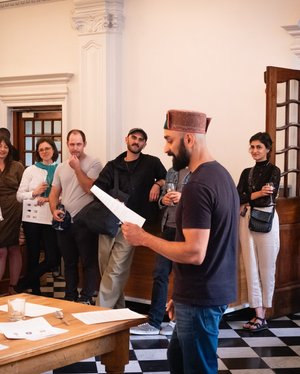
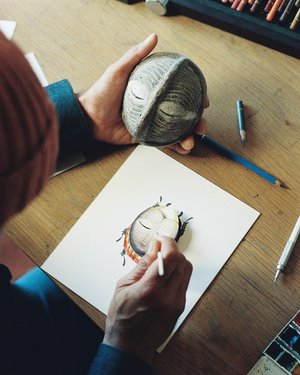
“That inner child started to awaken, and I created graphics with as many birds and animals as I could.”
Eventually, that impulse took over completely.
Together with fellow NID alumnus Hanumant Khanna, Sujay co-founded Quick Brown Fox, a design studio where his illustrations began to take center stage.
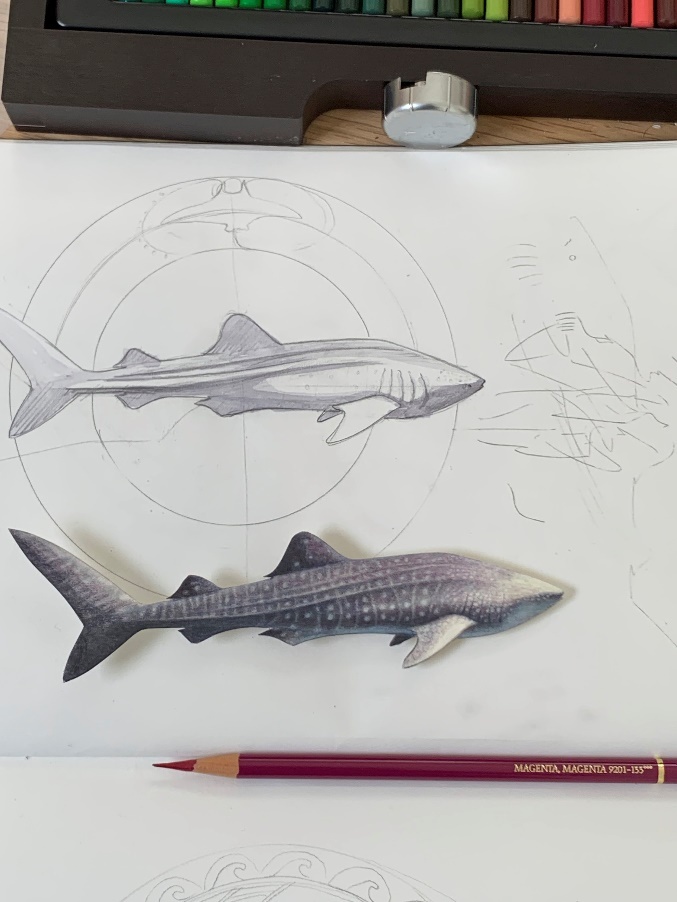
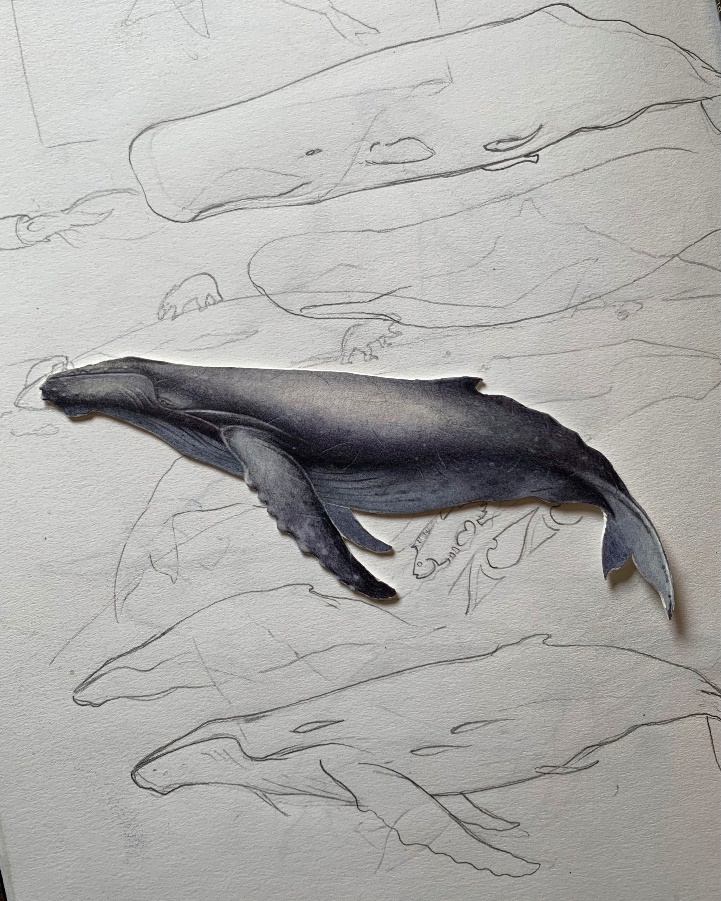
Process images from Sujay’s project Unencountered ; an unseen realm that whales and sharks inhabit.
“In nature, I could get lost in the microcosm of moss beside a brook or the translucency of untouched snow. There was something profound about witnessing the earth from a perspective where humans didn’t exist—where I didn’t exist. The comfort and ease with which things simply fit—I think there’s great beauty there.”
He took a sabbatical, moved to South Africa, and never looked back. Today, Sujay lives beside the afromontane forests at the foot of Table Mountain, sharing a home with his life partner and son, and working from a studio he built with love.
One of Sujay’s most publicly visible yet deeply personal works is the design of South Africa’s R5 circulation coin featuring a Southern Right Whale and her calf.
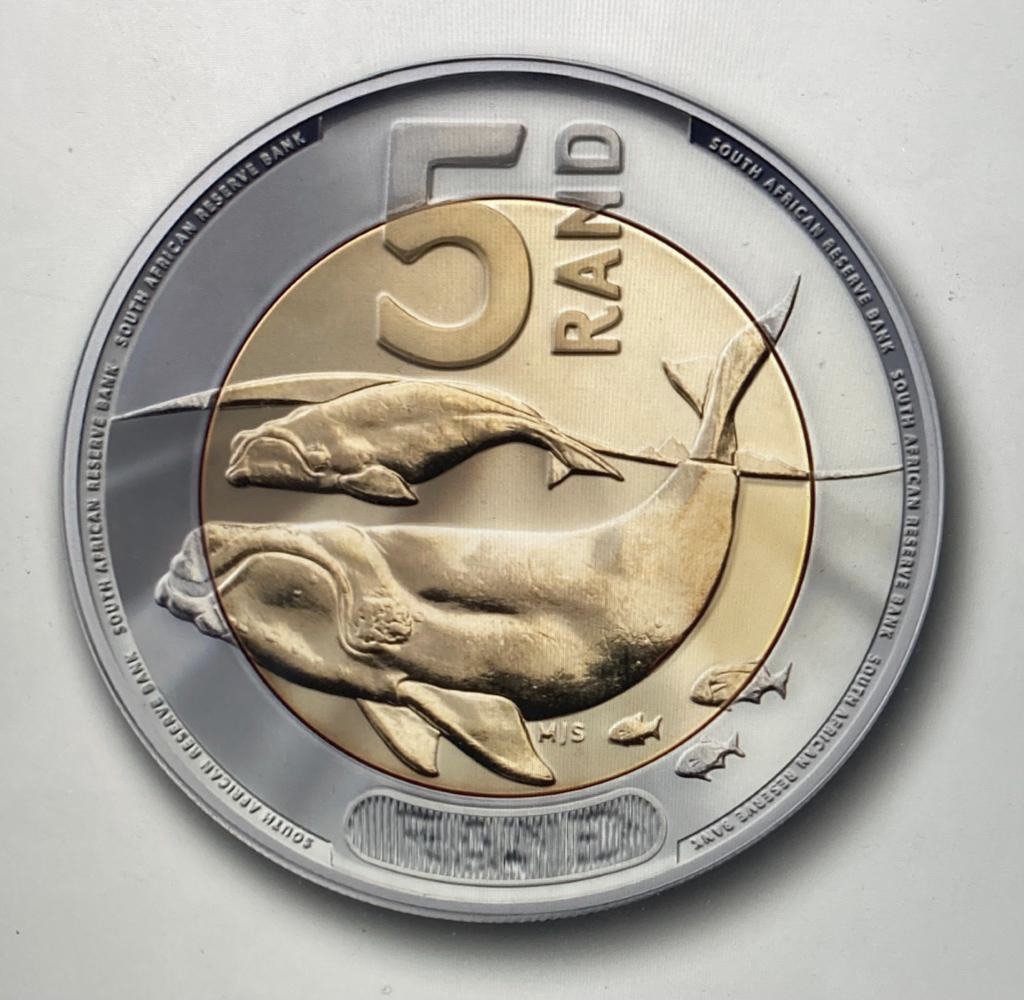

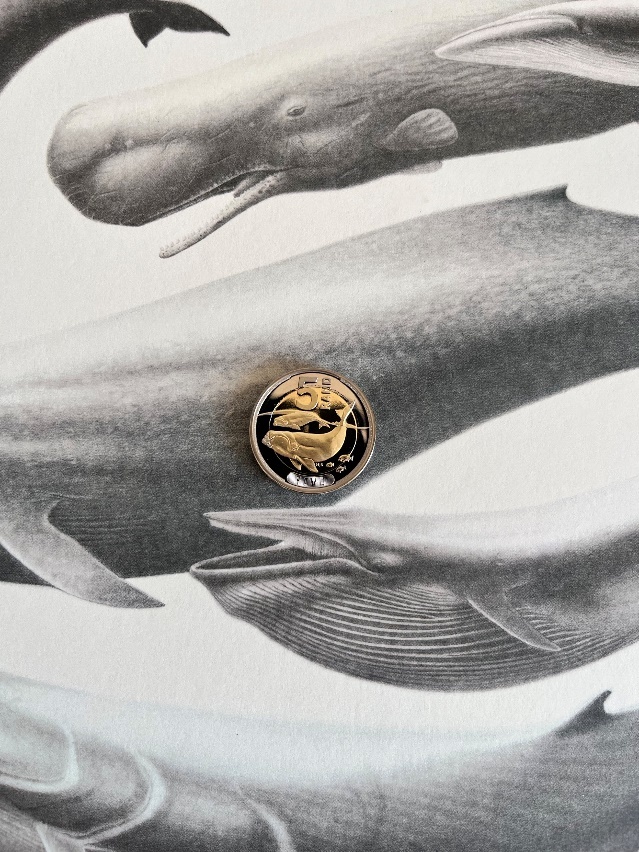
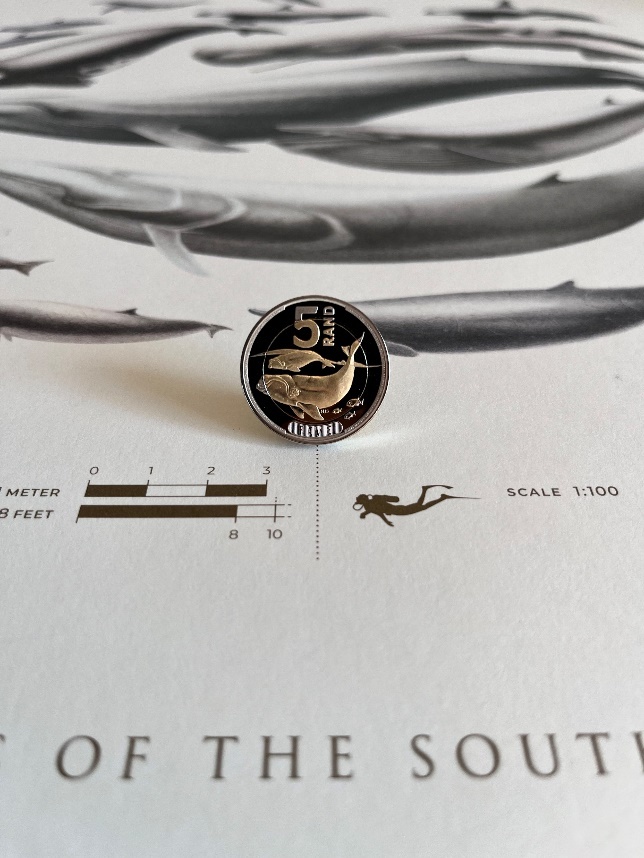
4th decimal Circulation 5 Rand Coin South African Reserve Bank designed by Sujay Sanan
“Late in 2019, I received an email from the SA Mint... inviting me to a meeting to discuss a ‘Top Secret’ project. It was one of those moments where you think to yourself—‘Yeah, right.’”
Nearly dismissing it as spam, Sujay’s curiosity led him to a secure boardroom, where he signed a lengthy non-disclosure agreement.
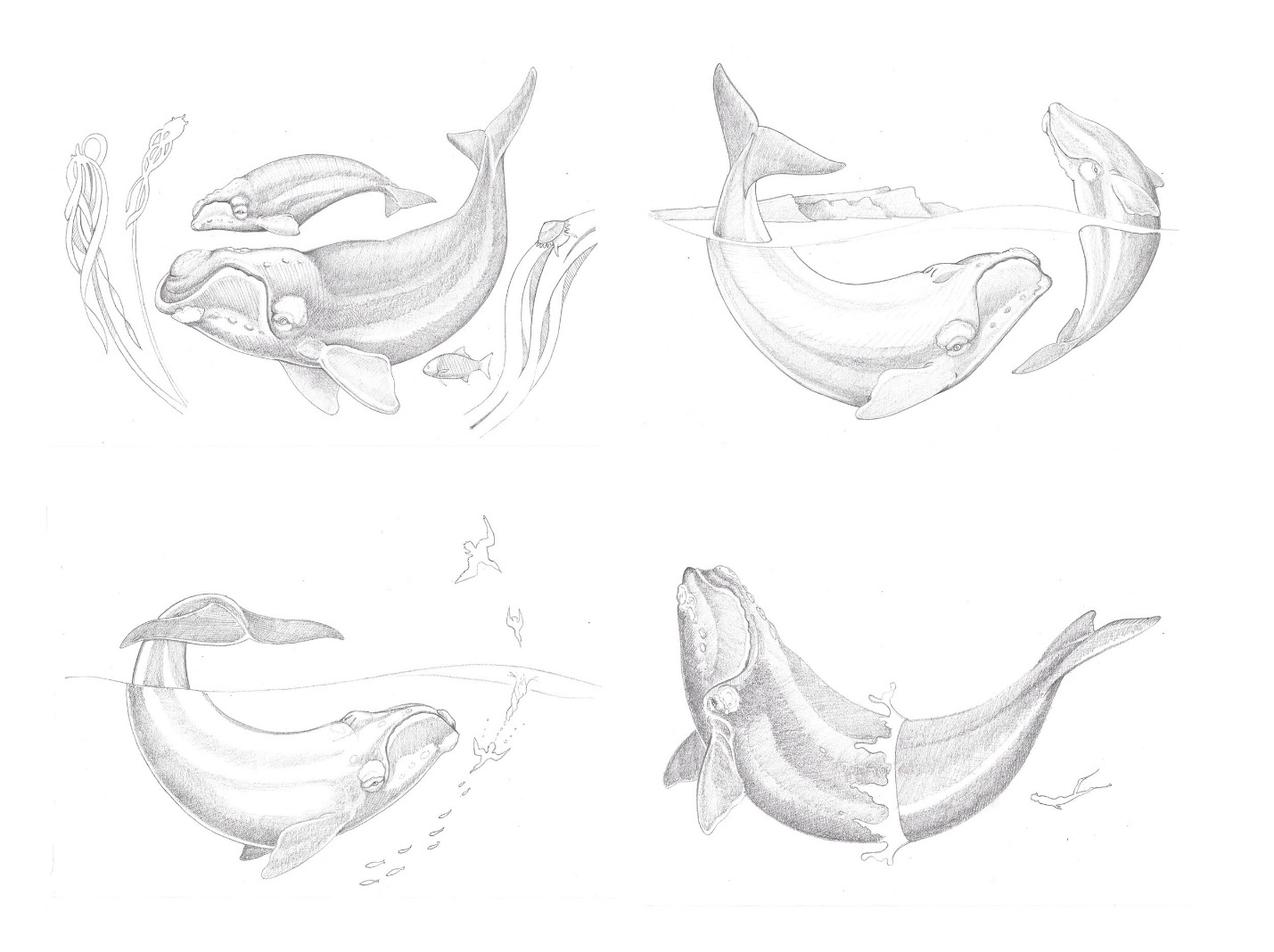
He chose to submit drawings of the Southern Right Whale. “I love drawing from imagination and have been better at it than drawing from a subject,” he says. “As a national symbol, a coin... must in no way be derivative of any photograph or drawing created by another person.”
He began the process with museum visits and a deep dive into whale documentaries . He says,“With the necessary procrastination research out of the way, I began sketching postures that I felt would work in a circular frame.”
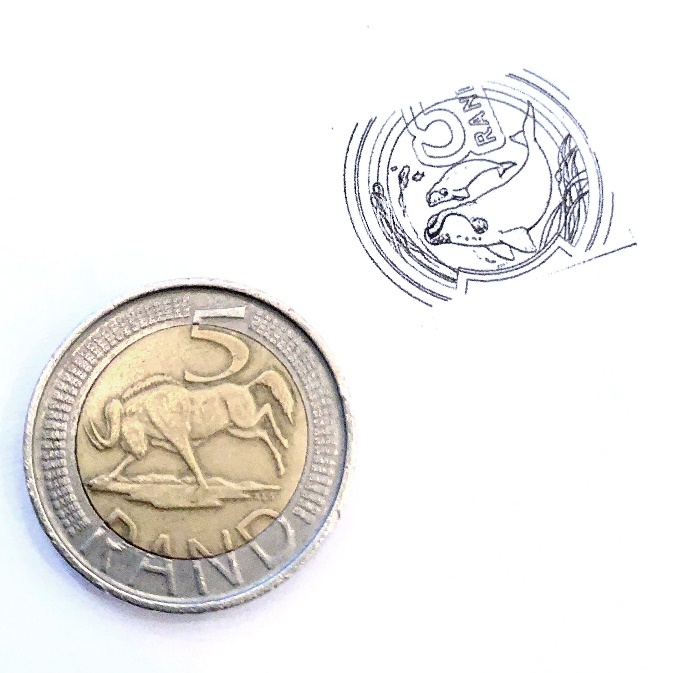

Drawing for a coin was unlike any other medium. The metallic surface is great at picking up detail, but the bas-relief is measured in microns, so you can’t really depict perspective very well. In terms of spatial positioning, the furthest part of your subject and the closest part are not very discernible in relief.
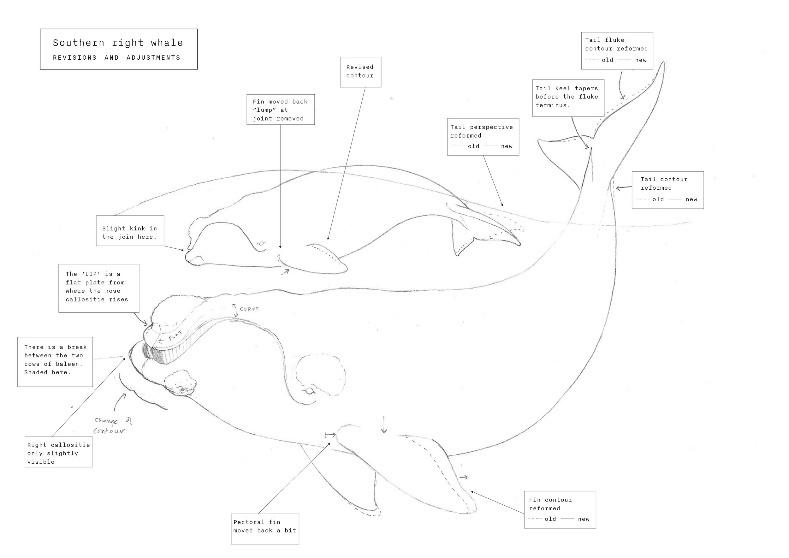
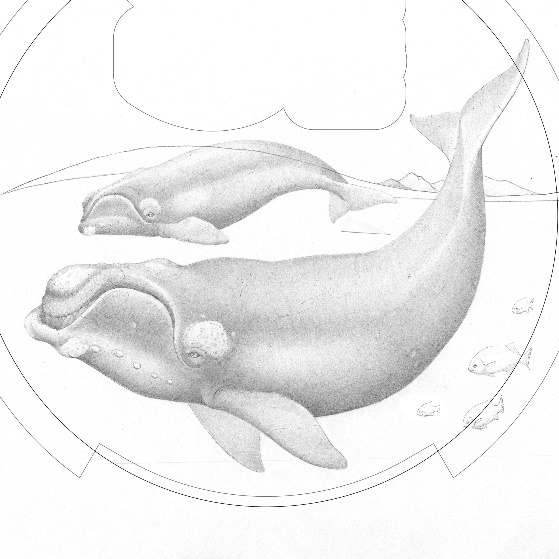
“I drew a mother and her calf as a symbol of hope. Hope that we can pass the planet on to the next generation. The coin also has three Galjoen, South Africa’s national fish.”

The entire process, unfolded in complete secrecy over three years, Sujay reflects. “The fact that this object will outlive me did place some pressure on how refined the forms would have to be.”

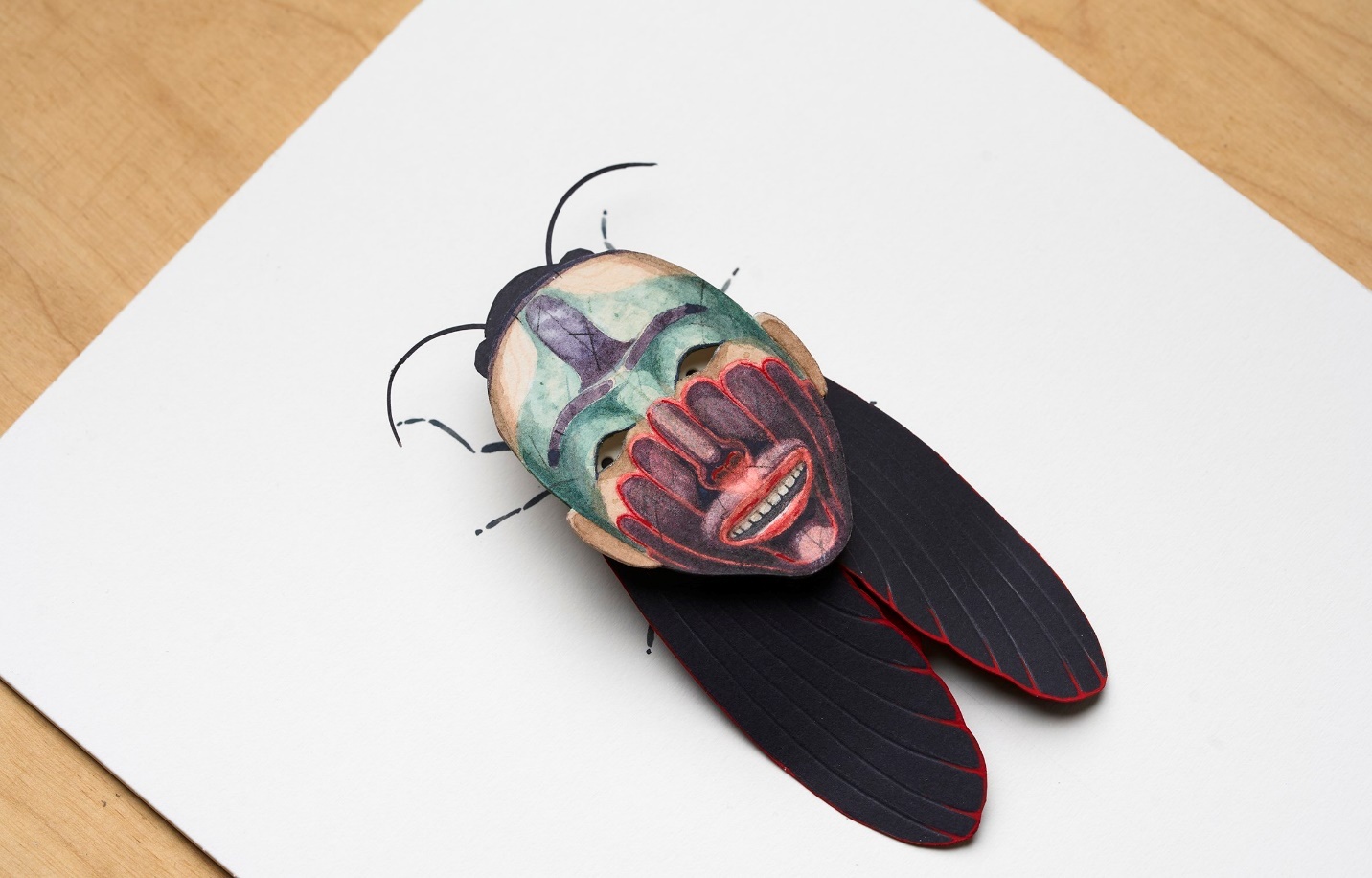
Artwork created by Sujay Sanan for his exhibition Mesmerism in Cape Town
Sujay’s recent solo exhibition, Mesmerism, explores a haunting idea: what if insects, sensing their extinction, began to mimic the sacred in human society to ensure their survival?
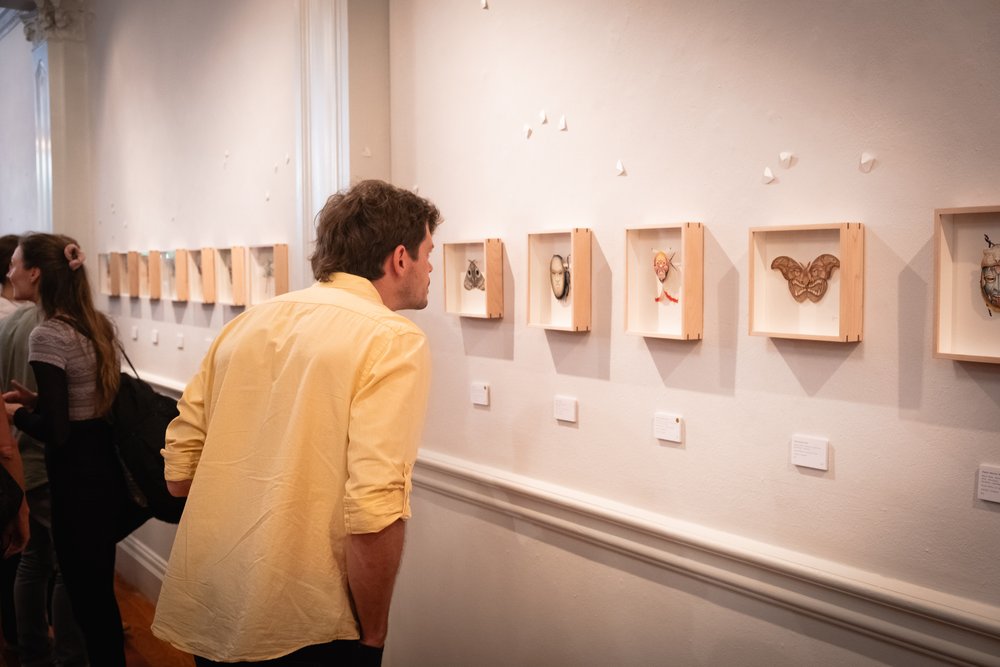
Inspired by childhood memories of masked Cham dancers in the Himalayas and rooted in contemporary ecological crisis, the works in Mesmerism depict fantastical species—part insect, part deity.
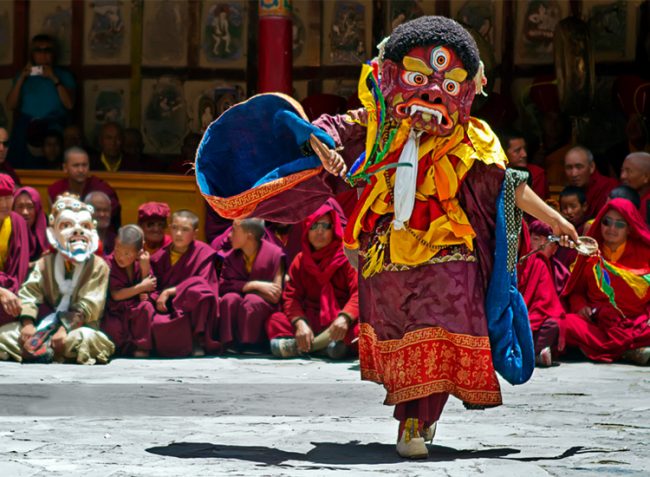
Cham dancers of the Himalayas
In ceremonial rituals, there is an undeniable energy shared between the masked performer and the viewer—a magnetic connection that speaks to our deep-rooted desire to engage with other worlds.
The idea of becoming ‘another’ holds a central space in our storytelling process. Masks have a powerful hold on my psyche.
Sujay draws a parallel between these traditions and the animal kingdom, especially the insect realm, where metamorphosis is a visible and powerful phenomenon. These transformations, from one distinct phase of life to another, are commonplace among insects, yet remain deeply mysterious and awe-inspiring.
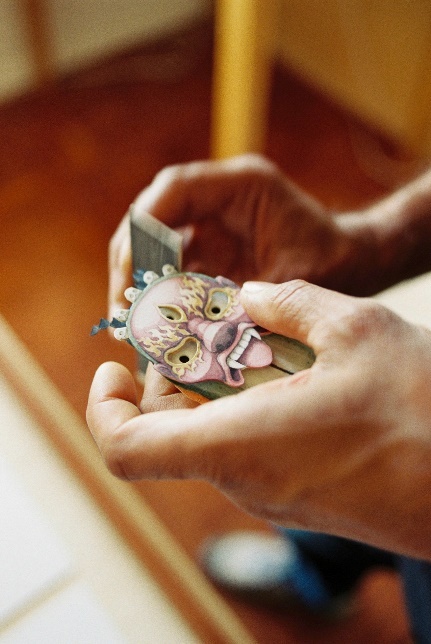
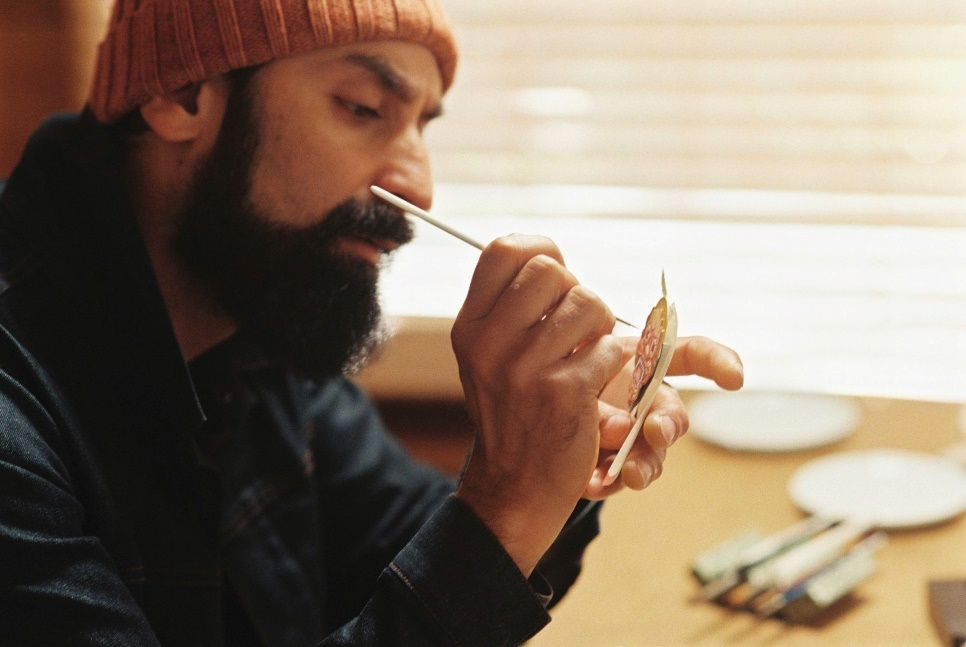
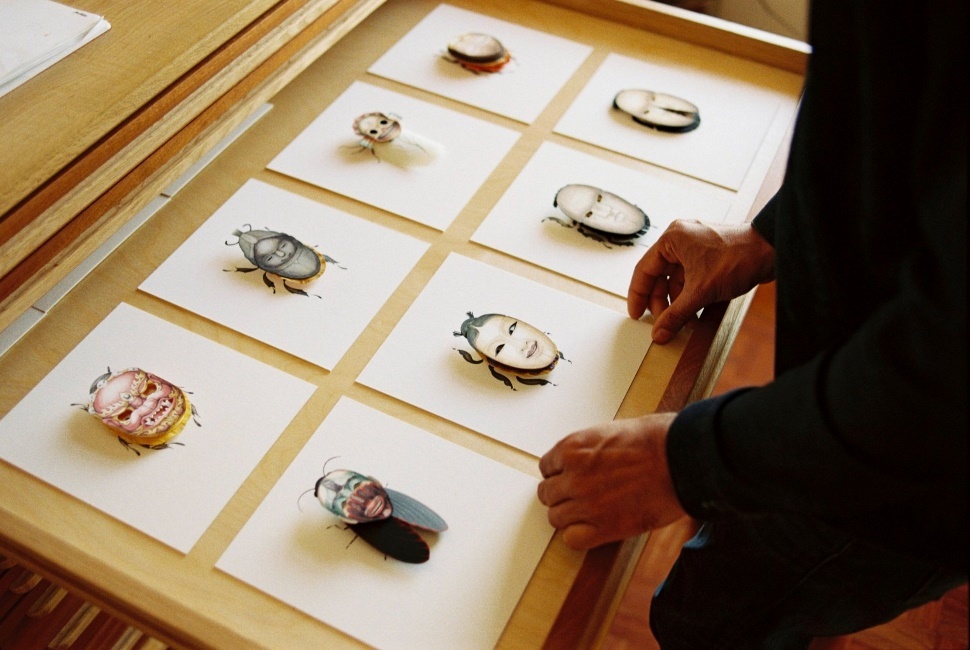
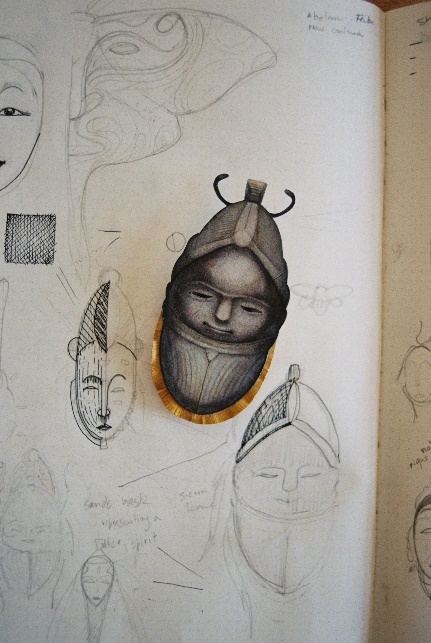
Process behind Mesmerism
At the same time, this work carries an underlying urgency. As human development accelerates, we continue to lose insect species at an alarming rate—often before we even discover them.
What if insects, aware of their own decline, evolved to mimic the symbols and values that human societies hold sacred? Could such mimicry become a form of survival?
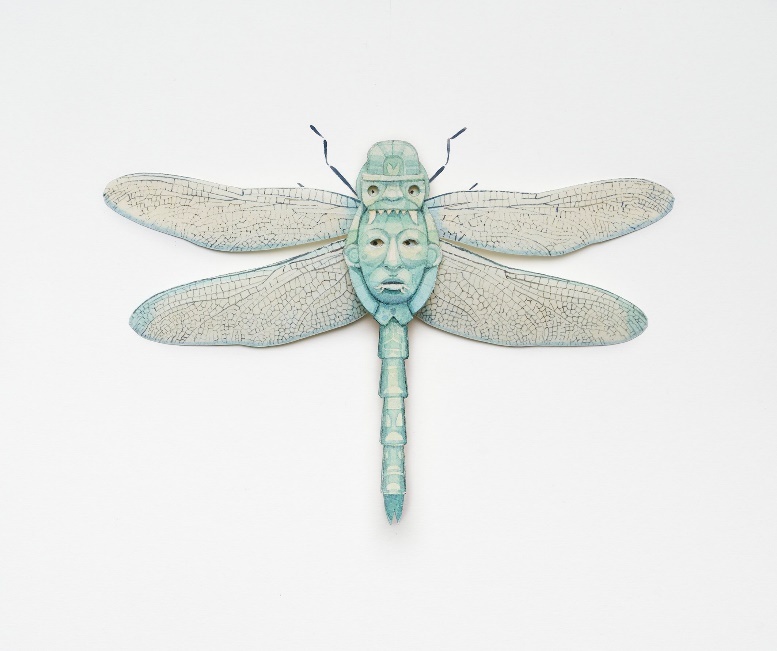
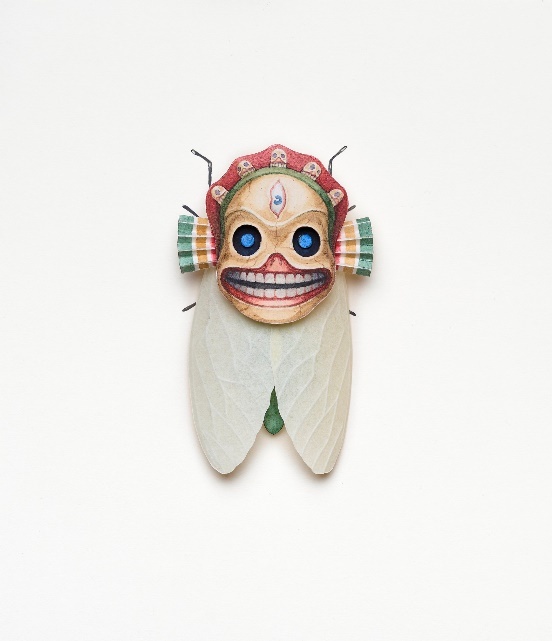
In these imagined worlds, insects have adapted over generations, developing forms that reflect the spiritual and cultural aesthetics of nearby human communities. As an artist, he doesn’t seek to capture or harm these creatures, but to recreate them as he sees them—strange, sentient beings, part nature and part myth.
Perhaps their representations draw energy from the supernatural realm. Do you feel their eyes following you? Rest assured these are only two dimensional recreations of what I observed. Perhaps you are drawn to the same animal magnetism as I was. Perhaps... this is Mesmerism.
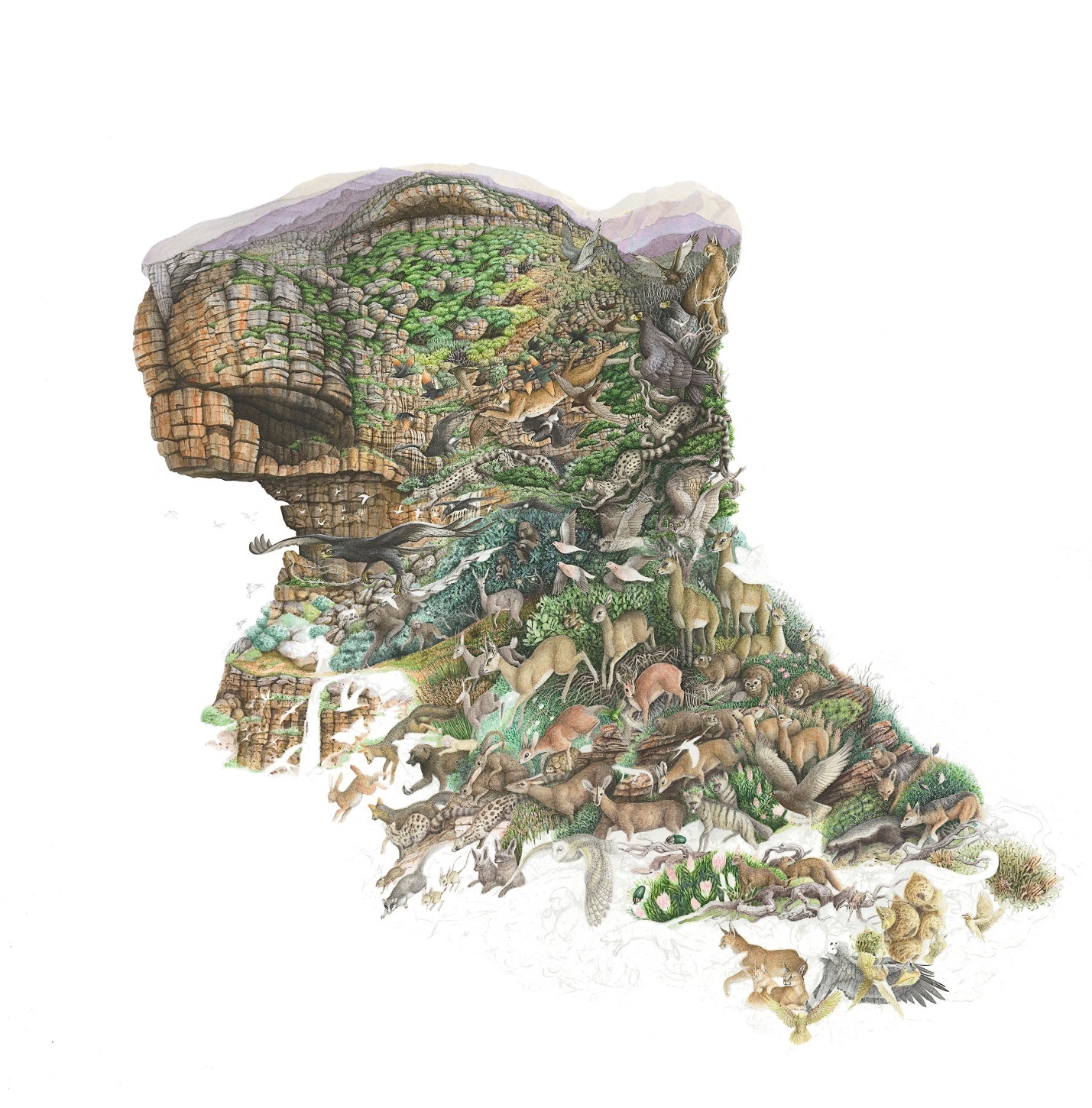
Cape Leopard from Sujay’s “Imagine a Forest” series | 70 x 70 cm | 2016
"Imagine a Forest" was the series that marked Sujay’s full transition into independent artistic practice. It’s an exploration of ecological relationships — predator and prey, pollinator and plant — illustrated with exquisite narrative depth.


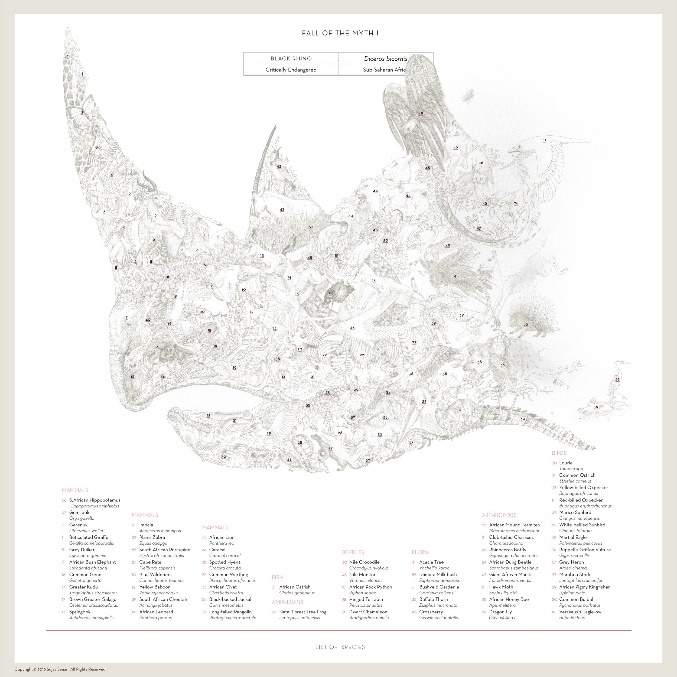

“I read hundreds of research papers,” Sujay says. “I’d look for odd connections — like how a fly with a 24-hour adult lifespan might impact the survival of a black rhino. Poop analysis, feeding trails, migration patterns — these were all gold.”
Each piece in the series involved months of research and layering — the initial idea sparked by a scientific finding, followed by compositional sketches, color studies, and often a complete reworking mid-way as new information emerged.

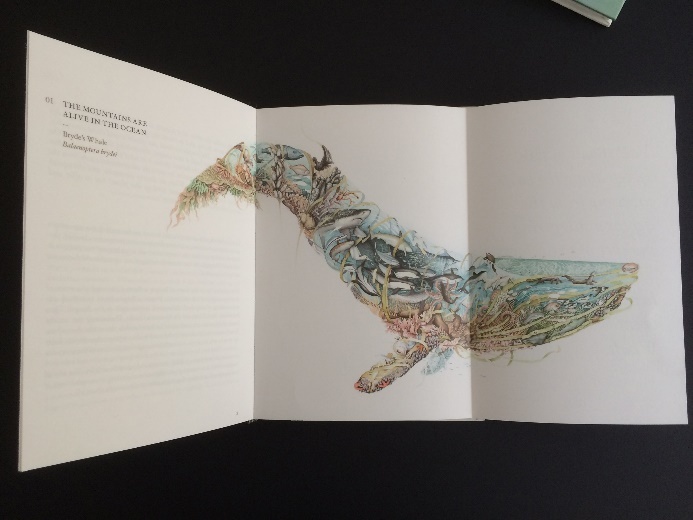
Together with Quick Brown Fox Design, Sujay created a publication with images and words that allow those interested to delve a little deeper into the artworks for ‘“Imagine a Forest’ series.
The final artworks show delicate, lyrical ecosystems where animals and plants seem to float in a dreamlike dance — a visual thesis on interconnectedness.
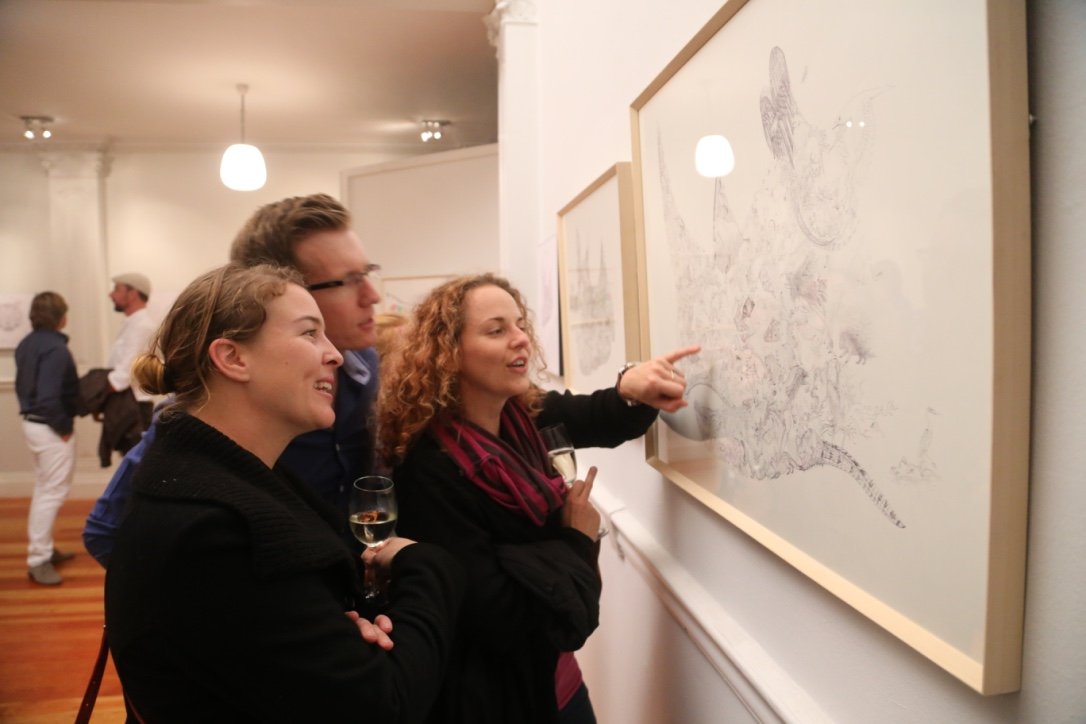
I love constructing narrative. It is a huge part of my process. I get the idea instantaneously - its like a narrative arc that makes sense. I see the keystone and then I fill all the gaps.
Today, Sujay’s work is increasingly shaped by questions of identity—what it means to be South Asian while living at the southern tip of Africa. While acknowledging the dominance of Western art history, he reflects on his place as a “brown” artist and the complexities that come with it. These questions are as vital as environmental concerns. He explores whether the containment of nature behind fences mirrors colonial control, and challenges us to rethink our relationship with the natural world—not as owners, but as beings deeply dependent on it.
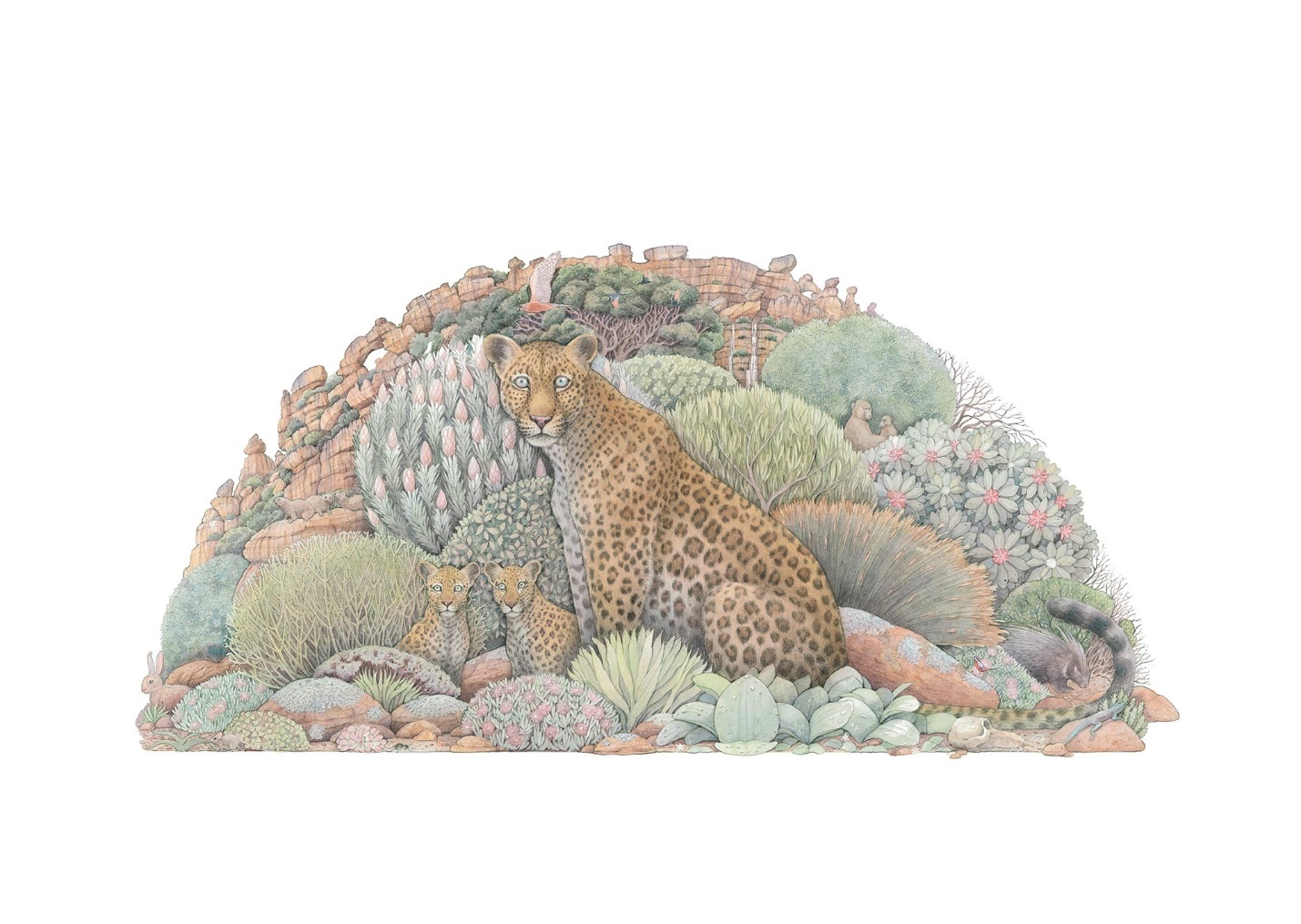
Artwork by Sujay THREE LEOPARDS, DRIEHOEK | watercolour on Paper | 2023 | 520 x 720 mm
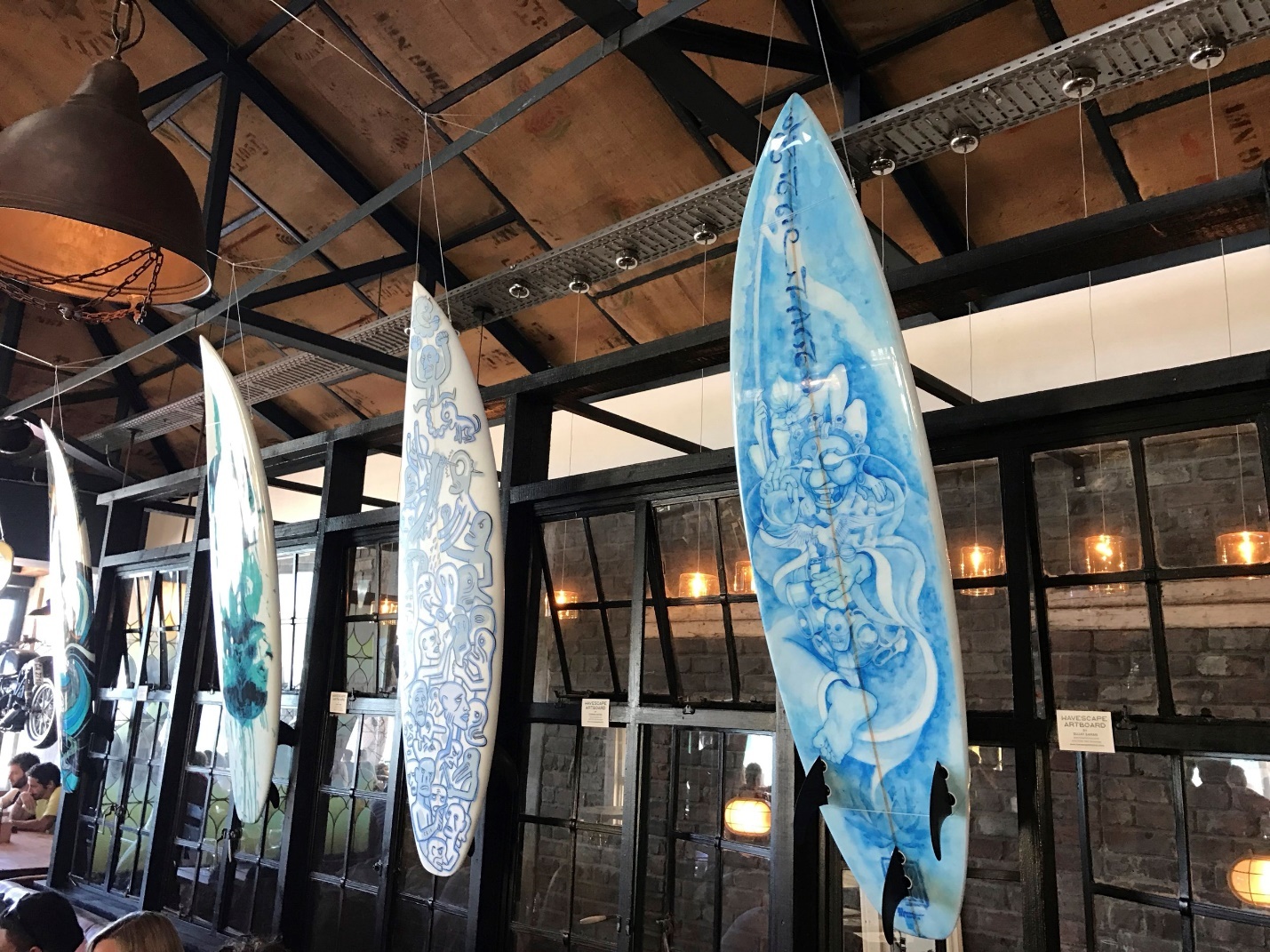
Wavescape Artboard | Acrylic paint on surfboard | 2016
Like most people I strive for relevance and I hope to achieve a small degree of it before my last paintings are done. What shape or form that takes depends on how the journey shapes me. I cannot exert my will on that.
On that note, we come to the end of this feature with Sujay. We wish him all the best as he continues to explore the rich intersections of art, ecology, and identity. His work challenges us to look closer—not just at nature, but at ourselves and the stories we carry.
You can reach out to Sujay Sanan on the channels below.
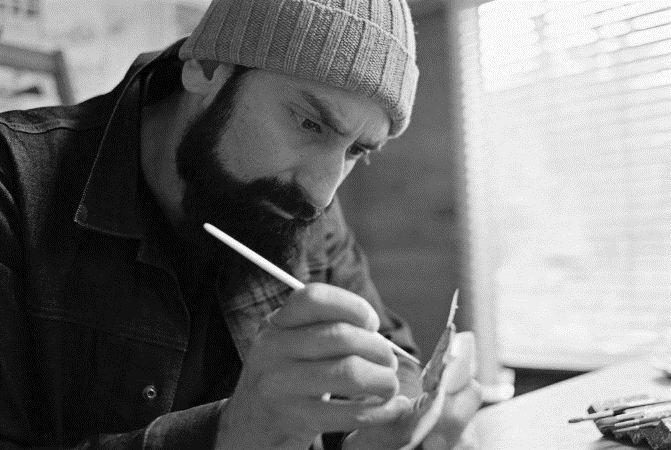
Sujay Sanan

